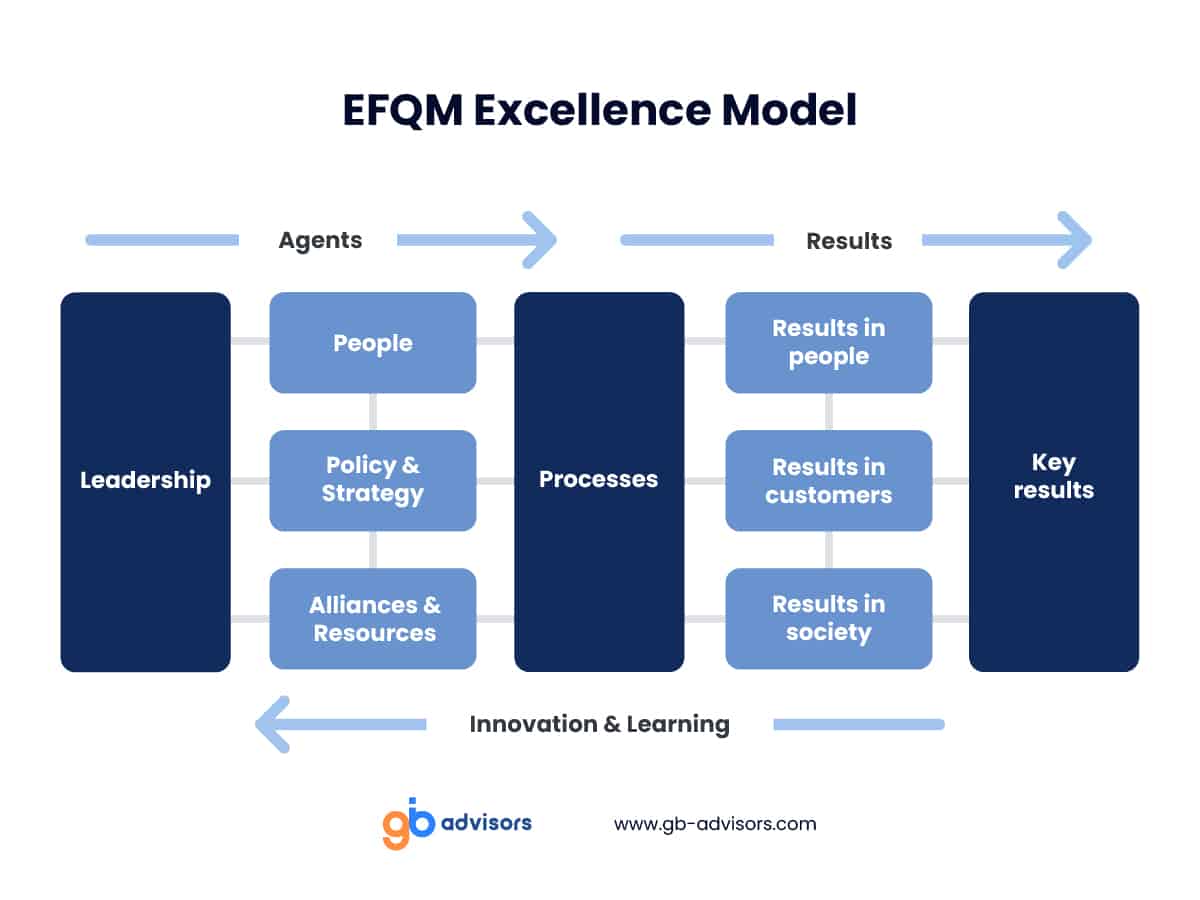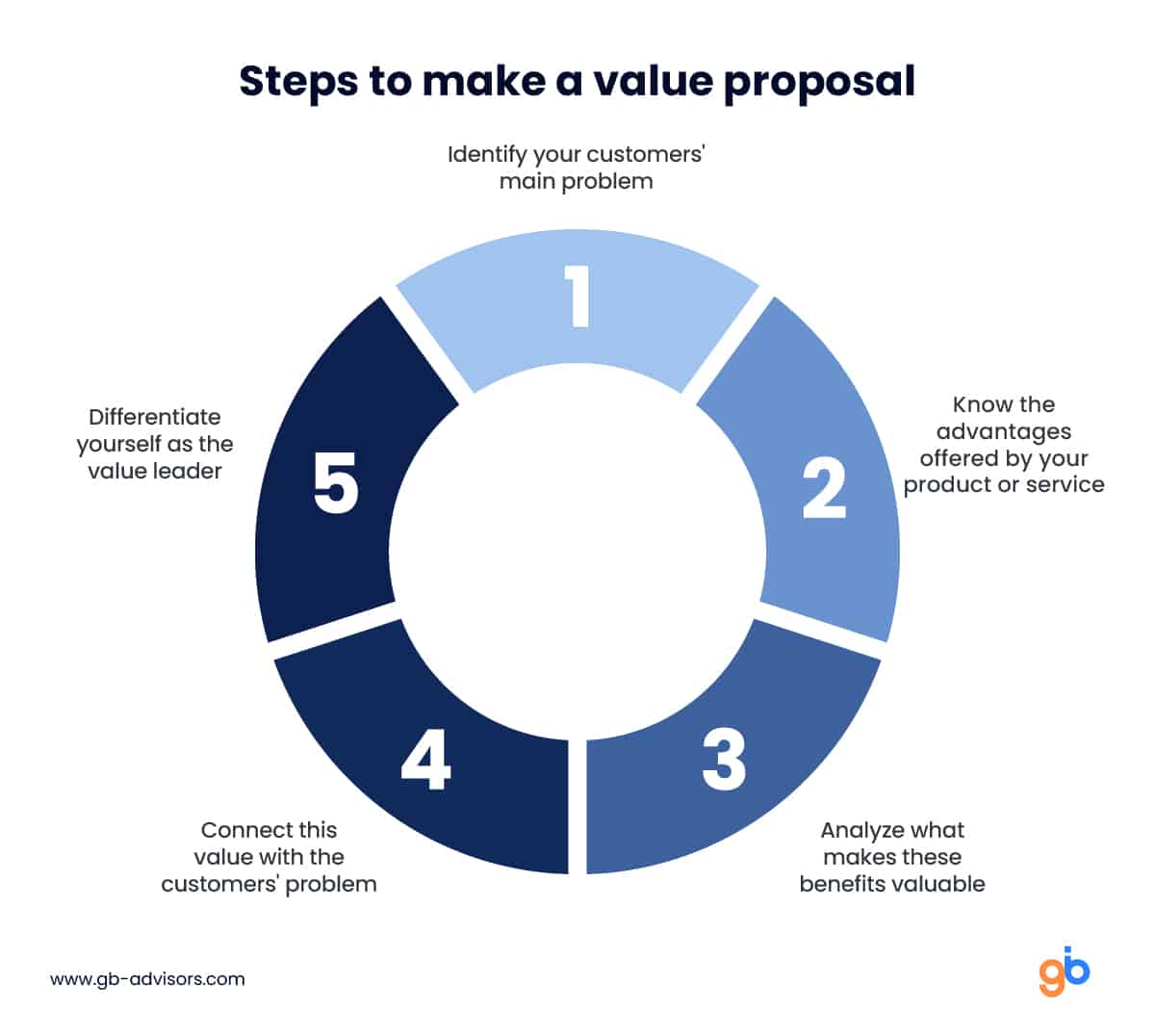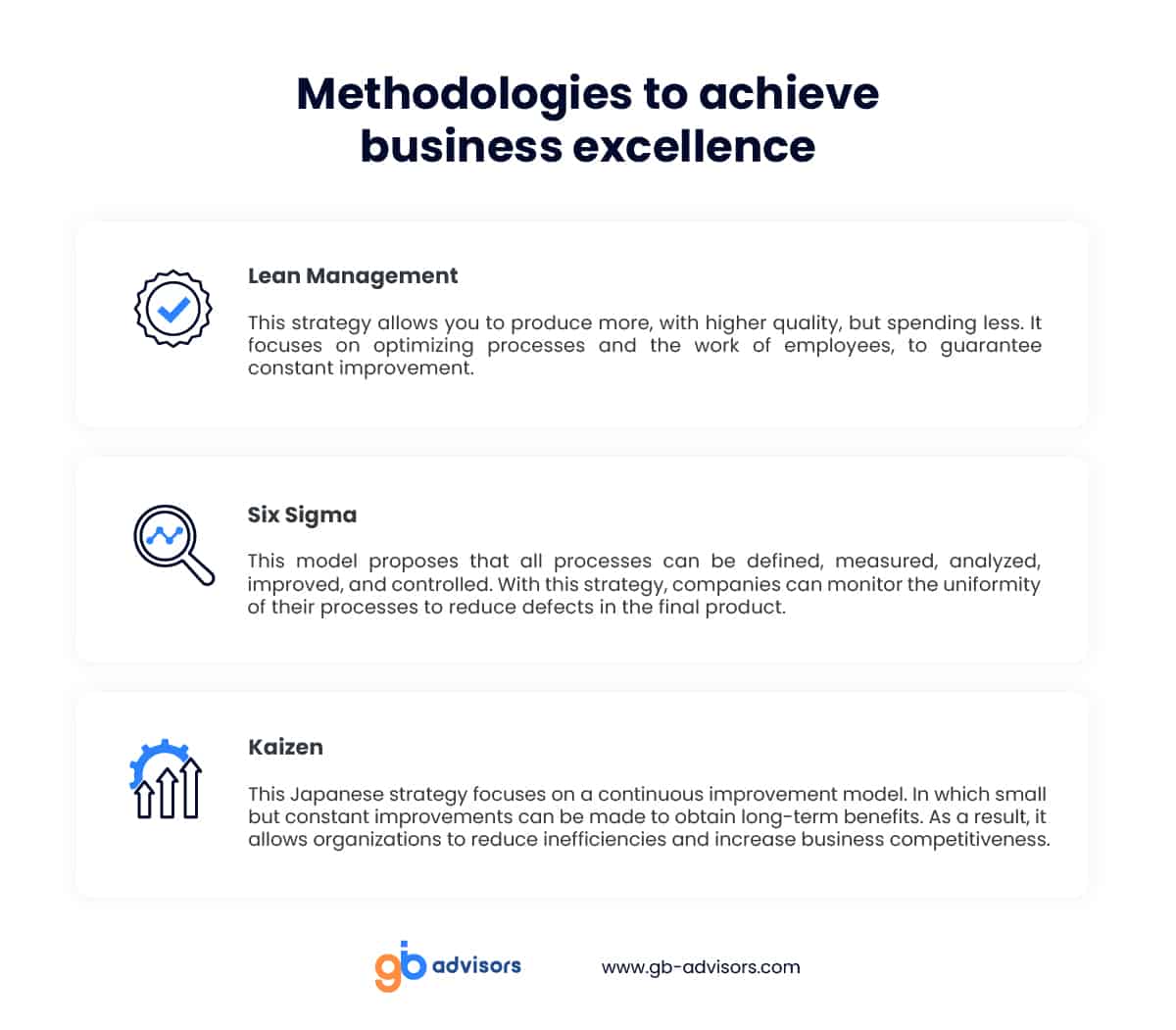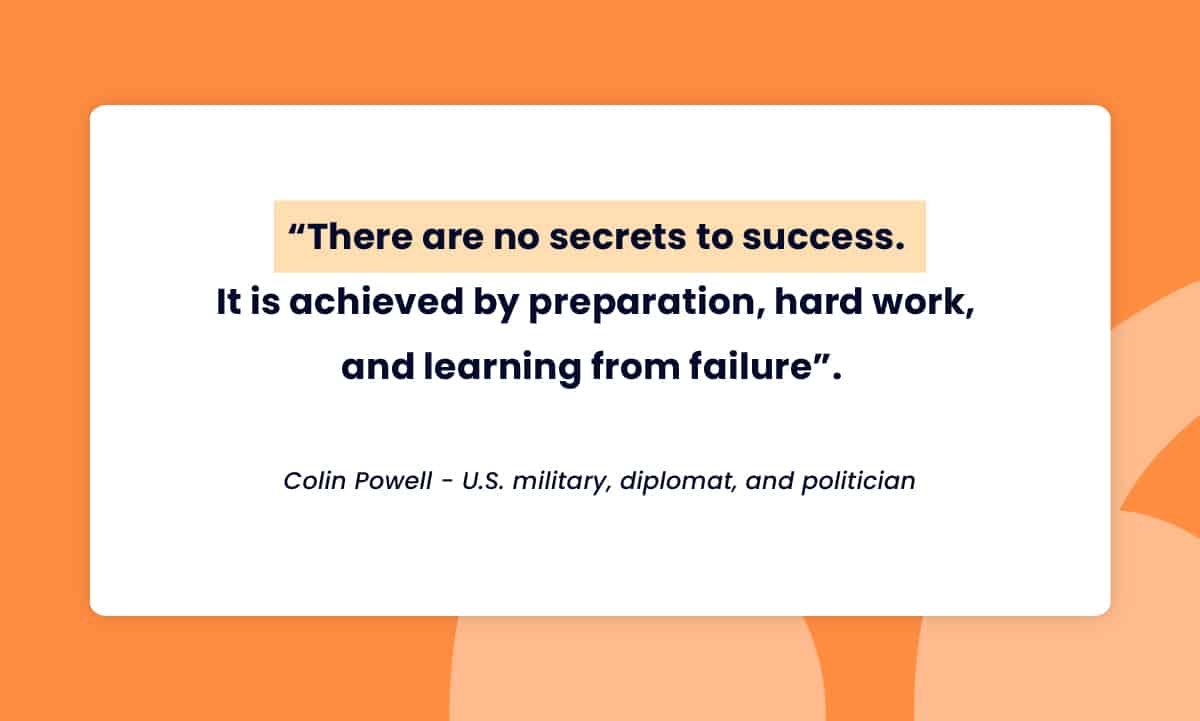Achieving business excellence is one of the main goals of modern companies. Regardless of the size of the organization, entrepreneurs often find themselves blindly entering uncharted territory, trying to figure out where to begin their quest for success.
However, this concept is not just about achieving a goal, as it encloses a set of objectives. That combined, allows organizations to achieve maximum efficiency and the best possible results.
Therefore, in this blog post, we will give you 6 key tips that will help you achieve business excellence in your organization. By applying these strategies you will increase the quality of your service and win the affection of your customers.
How to create a culture of business excellence?
To cultivate a culture of business excellence you must create a progressive management system that combines four fundamental pieces:
- Employees.
- Processes.
- Policies and strategies.
- Technology.
How do you achieve this goal? With a training plan that provides values and satisfies the needs of the strategy, you want to implement.
In a study conducted by Forbes, more than 50% of CEOs and CFOs remarked that corporate culture and values influence productivity, creativity, profitability, and the value of the company.
Therefore, organizations must prepare their employees and teach them different ways of working. In this way, they will be able to be in tune with the company’s culture and build skills such as collaborative leadership, emotional intelligence, an innovative mindset, and empathy.
This training should also be accompanied by a digital transformation. This way, your team will be able to streamline processes’ management, optimize operations and improve data analysis.
EFQM Excellence Model: What is it and how to use it?
The European Foundation for Quality Management model (EFQM) is a set of principles that allow organizations to analyze their processes and identify their shortcomings. This management model follows the maxim that only what we measure and evaluate can be improved. For this reason, some organizations take it as a reference in their journey to achieve business excellence.
By applying these guidelines, organizations can maximize their productivity while improving customer satisfaction. How do they do it? By following two fundamental principles:
- Analyzing the performance of the companies’ management system.
- Continuously evaluating each area, following pre-established parameters.
The EFQM model also proposes nine criteria of excellence. Each one allows the organization’s performance to be evaluated objectively. These criteria are divided into two groups:
Agent criteria:
- Leadership.
- Policy and strategy.
- People.
- Alliances and resources.
- Processes.
And the remaining four are called results criteria:
- Results in customers.
- Results in people.
- Results in society.
- Key results.
Below, we show you how these elements interact:

The elements detailed in this chart are considered by many organizations as a valuable management support tool. However, for this model to be successful, it must be accompanied by strategies that focus on satisfying customer needs.
6 tips for achieving business excellence
Understanding customer needs, optimizing processes, and motivating teams to provide solutions are essential components of business excellence. Here are some tips to help you achieve these goals:
1. Update your value proposal
Due to the pandemic, the business world has undergone a drastic change. Which has changed the consumers’ needs. These changes pose a new challenge to offer quality products and services that meet clients’ expectations.
Thus, you must update your value proposal to meet the new characteristics of consumers. This process can be carried out in the following order:

Although your value proposal should differentiate you from the competition, keep in mind that it is not a slogan. Because, while this element is important to your brand, your customers will not make a purchase based on a tagline alone.
For this reason, you must dig deeper into the consumer problems you want to solve. And what makes your product or service the ideal solution.
2. Select a methodology that fits your business strategy
The second step in your journey to achieve business excellence is to select the methodology you are going to implement. This way, you can save time by optimizing your processes and improving the quality of your products or services.
In addition to the EFQM model, which we discussed earlier, there are other strategies you can apply to achieve your goals:

Remember that the methodology you select should be based on the area of focus you want to improve.
For example, if you want to reduce waste in a factory, you can implement the Lean Management methodology. On the other hand, if you need to improve the customer experience, you can opt for Six Sigma. On the other hand, if your goal is to optimize your marketing processes, then Keizen is your best option.
3. Define your KPIs
After defining your objectives and strategy, it is time to select the KPIs you will use to monitor them. This will help you define and evaluate your progress over a given time.
Here are some indicators that you can use to measure business success:
- Sales growth.
- Leads number.
- Profit margins.
- Customer acquisition cost.
- Landing page conversions.
Although these metrics will help you monitor the success of your business, we recommend using the ones that fit the objectives you want to achieve.
For example, let’s say your goal is to improve your customer’s experience with a better-trained team. In this case, your KPI would be the amount of training your agents should receive to learn more about your products or services.
4. Motivate your employees to participate in the strategy to achieve business excellence
It is no secret that employees are the drivers of business success. So why not count on their expertise from the start? To do this, you must motivate your employees to participate in strategic conversations and contribute new ideas.
For starters, consider including the employees most affected by changes in the strategic process. These employees can give you real-time insight into the issues facing your company and why.
The team can also share their ideas on how to address particular challenges. They can also help you understand your customer’s needs and the best way forward to achieve your goals.
5. Improve your internal communication
When it comes to implementing new strategies, good communication is the key to achieving your goals. Having and providing a common understanding on all sides will streamline your team’s collaboration. And allow them to work towards the same goal.
Firstly, be sure to inform the people affected by the changes about the essential aspects of the strategy: the mission, the objectives, and the key performance indicators (KPIs). This will give them a complete picture of what your organization wants to achieve.
Then, create a channel where employees, managers, and leaders can stay in contact and monitor the status of the tasks. You can achieve this by implementing an automated service platform. This tool will allow your employees to work centrally on their tasks and improve internal and external communication.

6. Ensures continuous improvement
Unlike other processes, business excellence does not stop once it is achieved. Thus, it requires constant communication, continuous improvement, and the commitment of all employees. This way, you can keep your company ahead of the competition.
All this is achieved by always looking for new solutions to manage your processes. And fostering an approach that allows you to optimize your company’s resources. For that reason, it should be a constant practice. This way, it can help your employees to improve every day.
Organizations that can master these strategies and have a continuous motivation to improve, will be the ones that achieve their goals and reach success.
If you need help optimizing your processes or want to implement new technological solutions, contact us for a free consultation.



